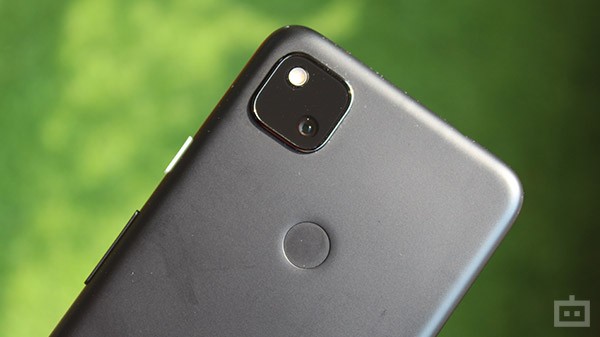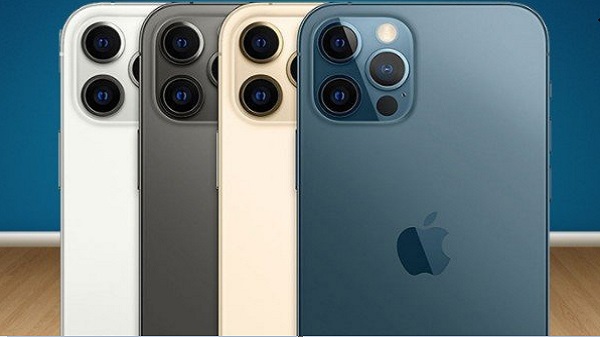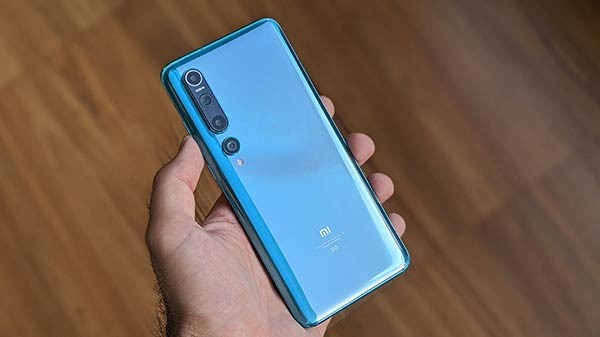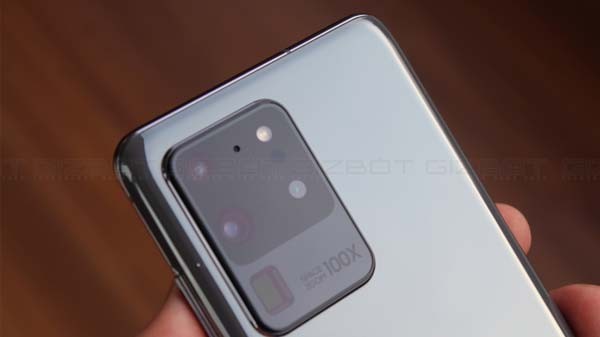Just In
Don't Miss
- News
 Gukesh D Wins FIDE Candidates Chess Tournament 2024, Extends Win Credit To Idol Viswanathan Anand
Gukesh D Wins FIDE Candidates Chess Tournament 2024, Extends Win Credit To Idol Viswanathan Anand - Movies
 Kasoombo Trailer, Release Date: Here's When Hindi Version Of Film Will Release
Kasoombo Trailer, Release Date: Here's When Hindi Version Of Film Will Release - Finance
 Up 450% From IPO Price: This PSU Energy Stock Soars Following Strong Q4 Earnings; Profit Surges 45%
Up 450% From IPO Price: This PSU Energy Stock Soars Following Strong Q4 Earnings; Profit Surges 45% - Automobiles
 Toyota Sales Breakup For The Month Of March 2024 – Hycross & Hyryder Leads The Charge
Toyota Sales Breakup For The Month Of March 2024 – Hycross & Hyryder Leads The Charge - Lifestyle
 Kalki 2898 AD: Amitabh Bachchan As Ashwatthama Aces The Mystical Look In The Teaser, Pics!
Kalki 2898 AD: Amitabh Bachchan As Ashwatthama Aces The Mystical Look In The Teaser, Pics! - Sports
 T20 World Cup 2024: 10 Players Certain of Getting Place In India Squad For Upcoming ICC Event
T20 World Cup 2024: 10 Players Certain of Getting Place In India Squad For Upcoming ICC Event - Education
 AP SSC Results 2024 Declared On April 22, Check Details Here
AP SSC Results 2024 Declared On April 22, Check Details Here - Travel
 Journey From Delhi To Ooty: Top Transport Options And Attractions
Journey From Delhi To Ooty: Top Transport Options And Attractions
Smartphone Cameras That Set New Benchmarks In 2020
Smartphone cameras ascended to new heights in 2020. Who could have imagined that a pocketable communicating device would boast a 100MP sensor with 100x zoom (digitally) and would allow for 8K video recording? If that's not enough, some smartphone manufacturers even managed to put miniaturized gimbals on their devices to transform cell phones into pro video recorders. Let's have a look at smartphones that set camera benchmarks in 2020 for photo and videography.

Vivo X50 Pro
Among several smartphones we have tested in 2020, the Vivo X50 Pro proved to be the most versatile. The smartphone can capture excellent pictures and records crisp and steady videos, thanks to its triple-lens camera setup that has been equipped with a miniaturized gimbal and a periscope lens. The Vivo X50 Pro can zoom up to 60x. It even beats the Galaxy Note 20 Ultra in the image quality while capturing far-field objects like the 'moon'. The far-field zoom is achieved by an 8MP periscope camera which uses a rather narrow f/3.4 aperture. The 135mm lens supports four-axis optical image stabilization and offers up to 5x optical zoom and up 60x digital zoom.
Importantly, the Vivo X50 Pro captures best-in-class portraits, thanks to the 13MP depth sensor which despite having a narrow f/2.48 aperture produces impressive results. It is essentially a 50mm lens with 2x optical zoom creating pleasing bokeh. Further, the phone is also a good low-light camera device and offers some interesting night-time modes and filters like ‘Tripod mode' for extra dark scenarios, Black and Golden, Blue Ice, Green Orange, and Cyberpunk (filters). Vivo has also offered a capable front-facing camera on the X50 Pro to ensure crisp selfie output with some exclusive native features that are mostly seen on third-party photo-editing apps.

Google Pixel 4a
Google Pixel handsets are synonyms for photography. The year 2020 was a bit of a letdown for Pixel fans in India as Google didn't launch the flagship Pixel 5 line-up; however, the affordable Pixel 4a did make up for the loss to a good extent. Google equipped the affordable Pixel 4a with the same 12.1MP single-lens sensor with f/1.7 aperture that's offered on the Pixel 4, another flagship that never made it to the Indian market. The OIS+EIS-enabled lens has a 1.4µm pixel size and supports autofocus with dual pixel phase detection.
This is no fancy camera setup as there's no macro, wide-angle, or periscope sensor at play here. What it has is Google's computation photography algorithms that nail every single shot when you press the shutter button. The Pixel 4a captures amazing pictures in daylight and does not disappoint even when the light conditions aren't favorable. In fact, this 30K device even beats the most premium flagship phones in low-light photography, thanks to Google's Astrophotography mode.
Overall, the Pixel 4a is an excellent choice for anyone looking for an affordable camera smartphone for an effortless photography experience. Just make sure you carry a power bank with you as the phone's 3,100 mAh battery is a sheer letdown.

Apple iPhone 12 Pro Max
The iPhone 12 Pro has the most impressive camera system in Apple's iPhone lineup till date. What makes it interesting is the new LiDAR sensor for building depth maps and first-of-its-kind 4K Dolby Vision HDR video support at 24/30/60 fps. It is all achieved by a 12MP, 26 mm-equivalent f/1.6 lens which comes equipped with a sensor-based optical stabilization system (OIS+PDAF). The camera setup captures true-to-life colors, accurate exposures, and a wide dynamic range while shooting both pictures and videos. Apple has also made some good improvements in portrait and night time photography.

Xiaomi Mi 10 5G
Xiaomi's most expensive smartphone in India- the Mi 10 5G is one of the first handsets to flaunt the 108MP camera sensor. The phone uses a 108MP Samsung ISOCELL Bright HMX sensor with a 1/1.33" sensor size and 0.8um pixel size. The massive sensor has an OIS-enabled 7P lens with an f/1.69 aperture. Thanks to the biggest ever camera sensor on a phone, the Mi 10 5G captures highly detailed 108MP shots. The mighty sensor also gives the Mi 10 5G the capability to record super sharp 8K videos, 4K videos (3840 x 2160), and Full HD videos at both 60fps and 30fps. The phone even features a Pro (manual) video mode to help you make the most out of the capable hardware.
But Xiaomi made some questionable choices with the remaining camera sensors that let us down a bit. The phone lacks a telephoto lens and ships with a 2MP macro sensor and a 2MP depth sensor. While these sensors performed much better than what we had expected, we would have still preferred a dedicated telephoto lens on the Mi 10 5G with at least 5x optical zoom and 30x digital zoom as the phone's 108MP primary sensor lacks far-field zoom.

Samsung Galaxy S20 Ultra
Samsung's big and bold S20 Ultra was also one of the first handsets to flaunt the 108MP camera sensor. Unlike the Mi 10 5G, the Galaxy S20 Ultra's camera setup is capable of 100x far-field zoom and has a far better overall camera setup. The 108MP ISOCELL Bright HM1 sensor is accompanied by a 48MP telephoto sensor, 12MP fixed focus f/2.2 ultrawide angle lens that offers 123° field-of-view and a 0.3MP f/1.0 ToF sensor to create bokeh. For selfies, the Galaxy S20 Ultra sports a 26mm wide 40MP sensor with an f/2.2 aperture. The selfie camera also supports PDAF.
This is a very capable camera setup that delivers excellent results. The Galaxy S20 Ultra captures vibrant shots in good lighting conditions. The daylight shots show excellent dynamic range, punchy colors, and good contrast levels. The noise is controlled very well in broad daylight and low-light scenarios. Both the standard mode and the ‘Live Focus' mode creates a shallower depth-of-field. The subject isolation looks very natural even with the primary camera due to the bigger sensor size.
The 100x zoom is mostly a marketing stunt but the phone can pull up crisp shots up to 10x and even 15x if the camera is fed ample light. Further, the phone can shoot 4k @30fps from all its cameras and can also record 8k videos.

Poco X2
While the Redmi Note lineup and Realme XT made headlines for the first-ever 64MP camera sensor on a phone, it was Poco X2 that impressed us with the real-life performance. The phone turned out to be the best camera device in the sub-20K price-segment, thanks to the 64MP Sony IMX686 primary sensor which delivered far better performance than the 64MP Samsung GM1 sensor.
The 26mm wide sensor that measures 1/1.7-inch in size and has an f-number of 1.9 captures brilliant shots for a sub-20k handset. It is accompanied by an 8MP ultra-wide-angle lens, a 2MP macro lens working on a narrow f/2.4 aperture and a 2 MP depth sensor. For selfies, the Poco X2 flaunts a 20MP + 2MP front-facing camera setup. You can read our camera review of the Poco X2 to get more information about the phone's overall camera performance in detail.

Realme X3 SuperZoom
Realme's smartphone portfolio is also filled with several exciting and capable camera smartphones. One that impressed us in 2020 is the X3 SuperZoom. This sub-30K phone boasts a quad-lens rear camera setup featuring a 64MP primary sensor paired with an 8MP telephoto sensor with 5x optical zoom and 60x digital zoom capability (Periscope module).
The camera captures crisp 5x shots and also does justice up to 15x digital zoom pictures. The third lens in the configuration is again an 8MP wide-angle lens with 119° field-of-view. Realme could have swapped the 2MP macro sensor with a 5MP sensor as the smaller sensor isn't much of a help. Overall, the affordable price-point makes the Realme X3 SuperZoom a capable camera phone.

Vivo V20 Pro
Another phone that made it to our list of ‘Benchmark Camera' features this year is a recent launch by Vivo. The V20 Pro might not have the best-in-class rear camera but it flaunts a rather capable and unique selfie camera setup. The phone sports the biggest selfie camera sensor on any smartphone with the Eye Autofocus feature that comes in handy while shooting videos.
It maintains a pin-sharp focus on the user's face by continuously tracking the eye movement. The feature is very useful for content creators as the camera maintains a constant focus on the face even while walking or moving swiftly within the frame.
The 44MP primary selfie camera is aided by an 8MP wide-angle sensor (105 degrees) to allow for a wider field-of-view. The 44MP autofocus enabled sensor captures crisp and high-resolution selfies with natural skin tones. The phone also features all sorts of filters and modes to help you make the most out of a selfie smartphone.
The aforementioned handsets raised the bar in the smartphone photography game in 2020 and extended the features to their predecessors. These include- Xiaomi Mi 10T Pro, Poco X3, Samsung Galaxy Note 20 Ultra, etc. If you don't want to spend a fortune on the iPhone 12 Pro Max but want similar performance, you can check out the iPhone 12 Pro.
Also, some honorable mentions that deserve to be in the list are- Google Pixel 5/ 5XL and the Huawei Mate 40 Pro. Sadly, these handsets didn't make it to the Indian market otherwise the aforementioned list would have been a lot different.
-
99,999
-
1,29,999
-
69,999
-
41,999
-
64,999
-
99,999
-
29,999
-
63,999
-
39,999
-
1,56,900
-
79,900
-
1,39,900
-
1,29,900
-
65,900
-
1,56,900
-
1,30,990
-
76,990
-
16,499
-
30,700
-
12,999
-
18,800
-
62,425
-
1,15,909
-
93,635
-
75,804
-
9,999
-
11,999
-
3,999
-
2,500
-
3,599
















































